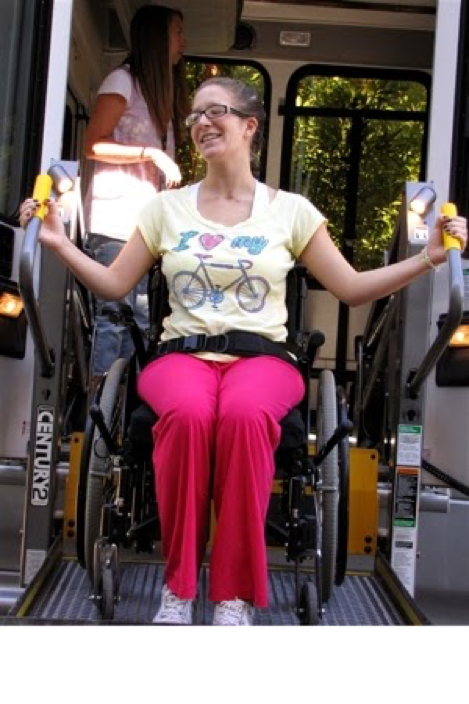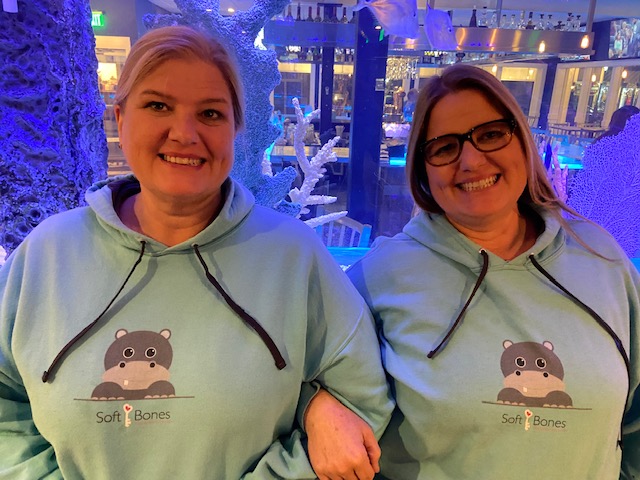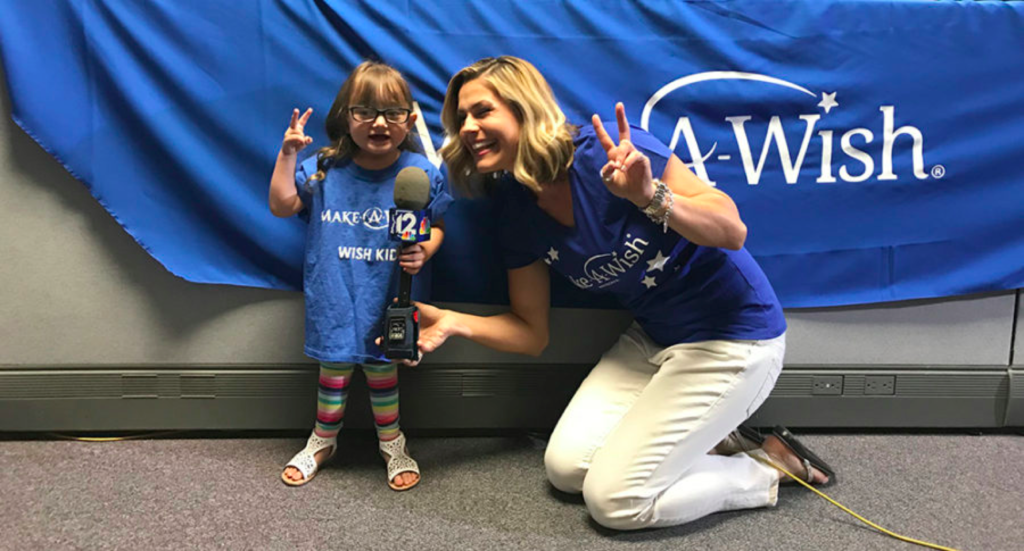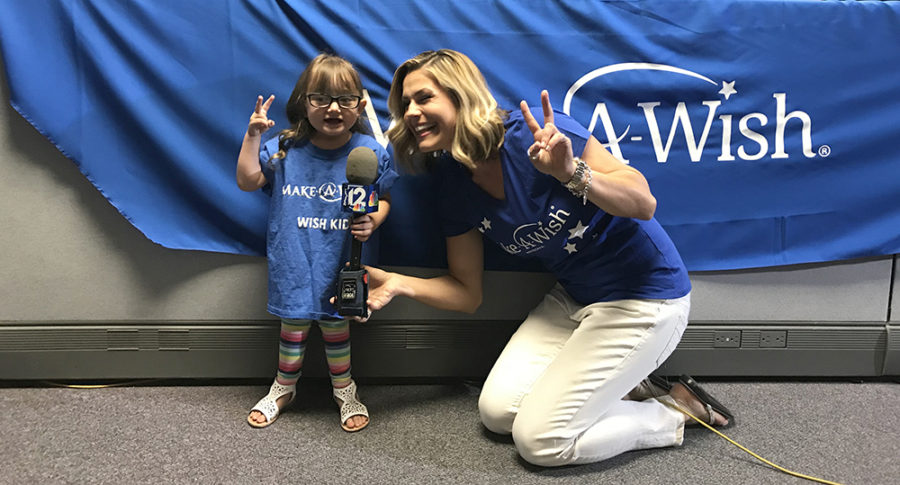Isabella and Julia

They are identical mirror twins who overcame all odds to survive their arrival.

Isabella & Julia were born at 35 weeks and 6 days. Brought into this world through an emergency c-section after the placenta was ruptured when they tried to break my water due a condition I had called Vasa Previa, which for most births is a 99% mortality rate. We would not have had the same outcome had I not already been at the hospital in labor and the doctor having been right in the room. They were intubated, required blood transfusions and placed into cooling therapy to reduce swelling in the brain. Those who helped deliver them went home at the end of their shift not sure they would survive. After they were doing well, the delivering doctor had told us that they were white as the hospital sheets due to their loss of blood and their delivery was scarier than anything she had experienced.
They were fighters from the beginning, extubating themselves within 12 hours. Hypothermia Therapy lasted for 3 days. They were 3 very long days still not having held our babies even for a moment yet. After a week they were moved from the NICU to the CCN and for the first time they were near each other again. We stayed in the CCN only another week and we were able to go home on Thanksgiving. All were so amazed at their quick recovery and the miracle that MRI’s show no obvious indication of long term complications. The lack of oxygen to their brains caused a HIE [Hypoxic-Ischemic Encephalopathy, which is still notable on their recent MRI’s. This lack of oxygen can often lead to more serious effects, like cerebral palsy.
Within the next year asthma becomes an increasing problem. By the end of 2011 it was a chronic issue and in 2012 Julia and Bella had been admitted to the hospital a total of 10 times (2 times Bella was moved into PICU), in addition to countless ER trips and procedures. While there had been some mild delays in their development, nothing had been a huge concern given their birth history. At about 14 months old they started walking and running and within a few months the pain started in Julia’s hip. She would have episodes of not wanting to run or jump and at times was in obvious pain. Within a few more months their legs were hurting both of them every night. They also both started losing teeth that year. Julia was the first during a visit in the hospital. She ripped it out with her blanket and had to search the whole hospital room to find it. I wish it were funny that not one person was piqued with interest in my pointing out the tooth was whole with the root still intact.

After xrays taken for her hips show dense bones, we are on a year and a half long misdiagnosis of OsteoPETROSIS (hard bones) while we run genetic tests for each gene they know of for that, only to confirm it is none of them. Thankfully our geneticist took no time to get the next step going quickly, as she already had learned how persistent I was from my follow-up for results from each test done. Exome sequencing was started in October 2013 and results finally came back in May 2014 which established a total opposite diagnosis of Hypohosphatasia (HPP), a metabolic bone disease and means they actually have soft bones, though our geneticist wasn’t convinced it was severe enough and felt more comfortable diagnosing them with a milder form called Odontohypophosphatasia. This new diagnosis was additionally confirmed by bone marrow biopsy results that were received the very same day as the exome sequencing, which indicated her bones are not hard but soft and there are bony islands and cartilage where there should be bone and considered it to be a lack of mineralization. Quite remarkable to be able to be so sure but I still wanted confirmation. Within days I emailed the pathologist that reviewed her biopsy and requested he confirm this diagnosis would fit his findings, which he did. Months later in trying to convince the geneticist to correct her diagnosis, she said that she would have to get confirmation from the pathologist. Thankfully, I was able to provide her with a copy of my email I had from him and she quickly corrected the diagnosis.
The next year was spent both seeing specialists locally and in Boston with very little support to develop a plan on how to care for them with this disease. Most had not heard of it or took the approach that there is nothing to be done until they break bones or can’t walk. Meanwhile, I continued searching for someone who knows about this disease and can help us navigate through it. It was very difficult in the beginning, doing my own research and reaching out to those who I hoped might know. Finally, Facebook was crucial in making connections to the right people closer to me thanks to support groups that are out there. We now have an endocrinologist about 4 hours away that is treating a few patients with this but more importantly, she has been fantastic and wants to learn more about it.
HPP is an ultra-rare genetic metabolic disorder {severe forms are 1 in 100,000} that the bones, teeth, liver, kidneys & brain. Due to a mutation to one (everyone has two) of the ALPL genes, calcium and phosphate are not processed properly so the bones are soft. The bones are soft due to the lack of mineralization. Ironically their soft bones actually appear dense on both xray and DEXA bone density scan and therefore have provided a false result. Symptoms they have are currently mild and often misdiagnosed as other things; chronic asthma (congenital), gas issues, bone pain, joint pain, weakness and lack of endurance, gait issues and the telltale early tooth loss with roots intact. More severe cases endure frequent broken bones, bone growth issues, brain involvement or may not even survive in through birth.

Currently for this disease the girls go to physical therapy weekly, wear AFO braces at night and one has orthotics to stop the rolling ankles. The asthma is controlled by typical asthma medications and frequent oral steroids in order to keep them out of the hospital. Change in the diet to limit calcium and phosphate have improved both bone/joint pain but more importantly the constant stomach aches only happen once in a while. This has improved their sleep a bit.
My husband and one of our older daughters also have HPP and both have some mild symptoms with overall pain that will continue to be monitored.
This progressive, life-threatening disease has no cure, but finally an enzyme replacement therapy treatment called Strensiq™ (considered to be a breakthrough treatment) was just approved through the FDA in October 2015. We are in the process of getting this treatment approved through insurance and hope they can start on it soon.
Tuberous Sclerosis Complex (TSC) is also a rare, life-threatening genetic disorder in which tubers or tumors can grow in all of the major organs (Brain, heart, liver, kidneys, eyes, etc). After it was confirmed through the exome sequencing that they also have the genetic mutation for [TSC 1] we have been able to get baselines to confirm there are a couple of lesions and areas of concern that we will continue to monitor. We are fortunate to be aware of things to come before symptoms of seizures or severe developmental delays appear.

Currently for their behavior, processing and sensory issues, they are going weekly for OT & Speech Therapy. They also have a very disrupted sleep pattern and are up 3-4 nights a week. Their TSC1 mutation is new and only the two of them have this specific mutation.
The exome sequencing also uncovered a third genetic mutation for Marfan Syndrome/TAAD, which can also be life threatening and mostly effects your heart and eyes. All baseline tests were done and currently there are no symptoms of this disease for either twin. They will continue to be monitored with eye exams and echocardiograms every couple of years for this, as well as my husband and our oldest daughter, who also have this mutation.
In addition to these in Jan. 2014 Julia was also diagnosed with ITP [Immuno Thrombocytopenia Purpura] which is auto-immune blood disorder in which her body destroys it platelets rather than the virus, which continued to be chronic requiring 6 hospital stays over the course of the next year. This is monitored with frequent lab work and she has managed to stay out of the hospital since Jan. 2015.
Needless to say we have busy weeks and sometimes very busy days. I look forward to sharing our journey with all of its ups and downs and hearing from anyone who wants to know more. We are also thankful to all the nurses and doctors who care and listen
Warm Regards,
Our Family







Responses